/Environmental Status/Habitats
Type of resources
Available actions
INSPIRE themes
Provided by
Years
Formats
Representation types
Update frequencies
status
Scale
Resolution
-
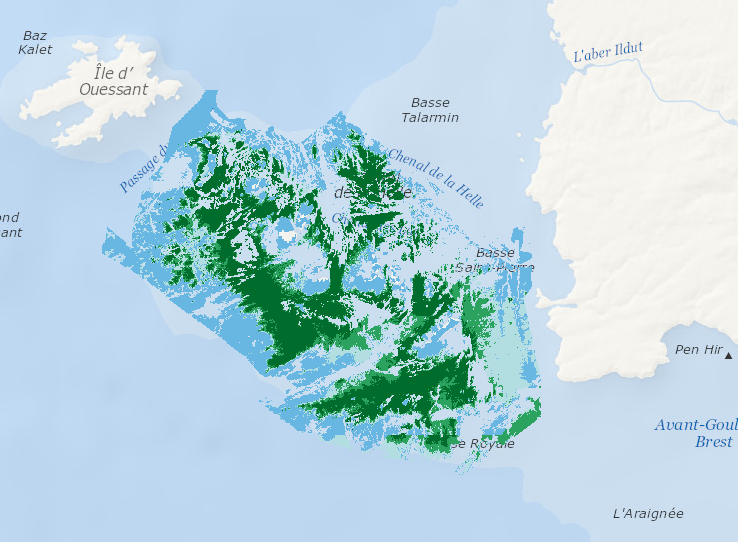
Data represents percentage cover of kelp forest as well as biomass of the 2 main species: L. digitata and L. hyperoborea. The used approach consists in firstly establishing surveys and appropriate processing methods in order to provide a detailed underwater topography of the area and to accurately delineate hard substrates (bedrock) potentially colonized by kelp. Secondly, a habitat suitability model is fitted for each species on some carefully selected field stations, measuring kelp presence/absence and biomass. Predictive maps are produced, based on hard substrate areas previously delineated.
-
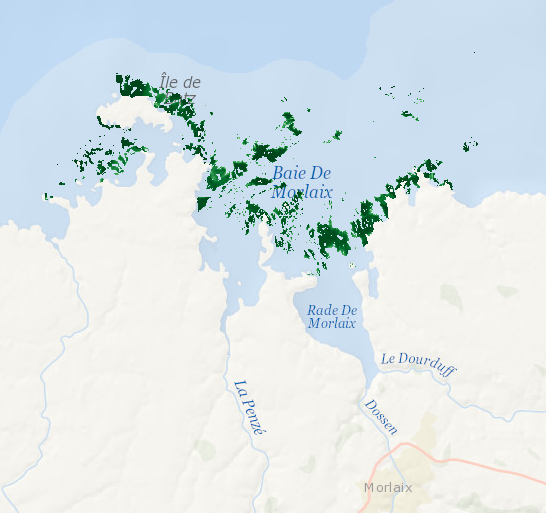
Data represents presence-absence prediction of kelp forest. Biological ground truth data were integrated with high resolution environmental datasets to develop statistical model that accurately predict the structure of Laminaria forests within the Bay of Morlaix. As a direct management output, high-resolution map (25 m2 grid) was produced.
-
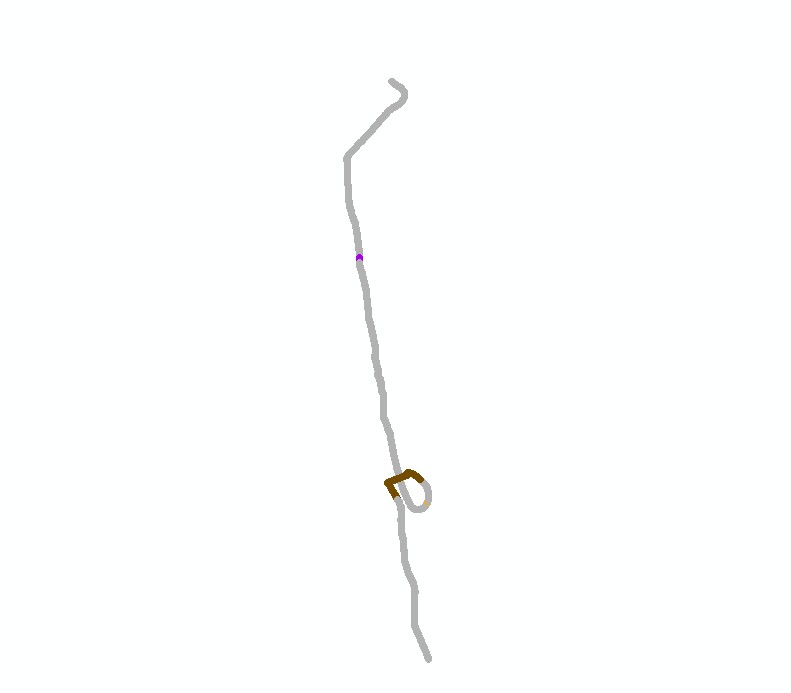
La carte des habitats de coraux d'eau froide du golfe de Gascogne de la campagne EVHOE 2012 a été réalisée par le laboratoire Environnement Profond de l'Ifremer dans le cadre du projet CoralFish et d'une convention entre l'Ifremer et l'Agence des Aires Marines Protégées. La méthode employée pour la cartographie des habitats repose sur le dépouillement préalable des images acquises grâce à la caméra tractée "Scampi" dans le cadre des legs 1 et 2 de la campagne EVHOE 2012 (du 18/10/2012 au 02/12/2012, chefs de mission : Jean-Pierre LEAUTE et Michèle SALAUN). Les habitats observés ont été définis selon la typologie CoralFish (J.S. Davies, B. Guillaumont, F. Tempera, A. Vertino, L. Beuck, S.H. Ólafsdóttir, C.J. Smith, J.H. Fosså, I.M.J. van den Beld, A. Savini, A. Rengstorf, C. Bayle, J.-F. Bourillet, S. Arnaud-Haond, A. Grehan, A new classification scheme of European cold-water coral habitats: Implications for ecosystem-based management of the deep sea, In Deep Sea Research Part II: Topical Studies in Oceanography, Volume 145, 2017, Pages 102-109, ISSN 0967-0645, https://doi.org/10.1016/j.dsr2.2017.04.014).
-
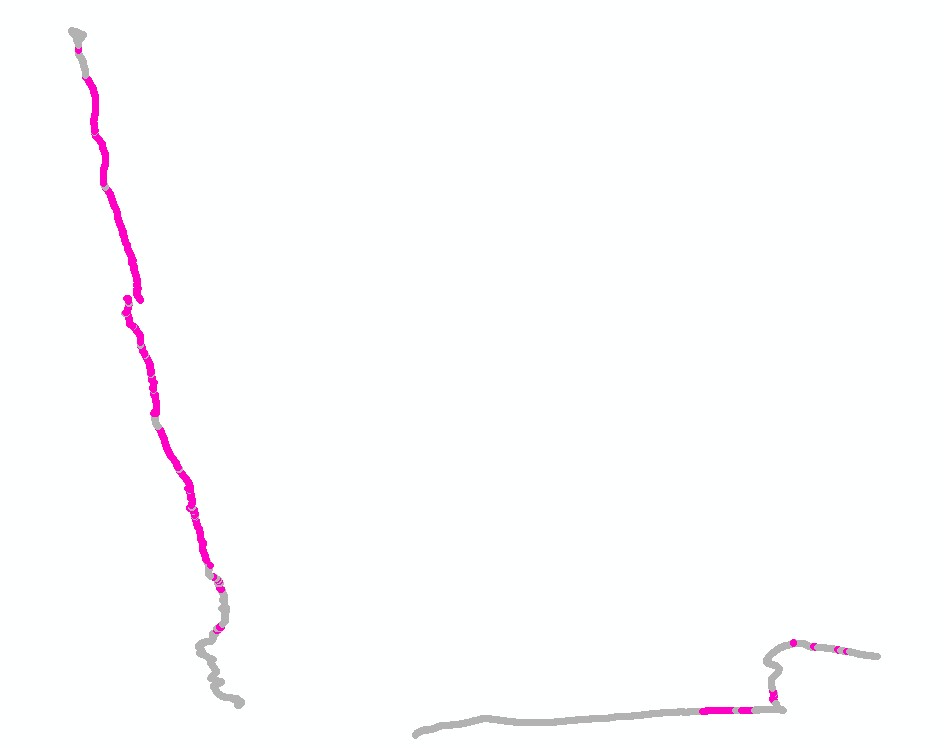
La carte des habitats de coraux d'eau froide du golfe de Gascogne de la campagne CE0908 a été réalisée par le laboratoire Environnement Profond de l'Ifremer dans le cadre du projet CoralFish et d'une convention entre l'Ifremer et l'Agence des Aires Marines Protégées. La méthode employée pour la cartographie des habitats repose sur le dépouillement préalable des vidéos et des images acquises grâce au ROV Irish dans le cadre de la campagne CE0908 (du 28/04/2009 au 19/05/2009, chefs de mission : Anthony GREHAN, Brigitte GUILLAUMONT et Christian MOHN). Les habitats observés ont été définis selon la typologie CoralFish (J.S. Davies, B. Guillaumont, F. Tempera, A. Vertino, L. Beuck, S.H. Ólafsdóttir, C.J. Smith, J.H. Fosså, I.M.J. van den Beld, A. Savini, A. Rengstorf, C. Bayle, J.-F. Bourillet, S. Arnaud-Haond, A. Grehan, A new classification scheme of European cold-water coral habitats: Implications for ecosystem-based management of the deep sea, In Deep Sea Research Part II: Topical Studies in Oceanography, Volume 145, 2017, Pages 102-109, ISSN 0967-0645, https://doi.org/10.1016/j.dsr2.2017.04.014).
-
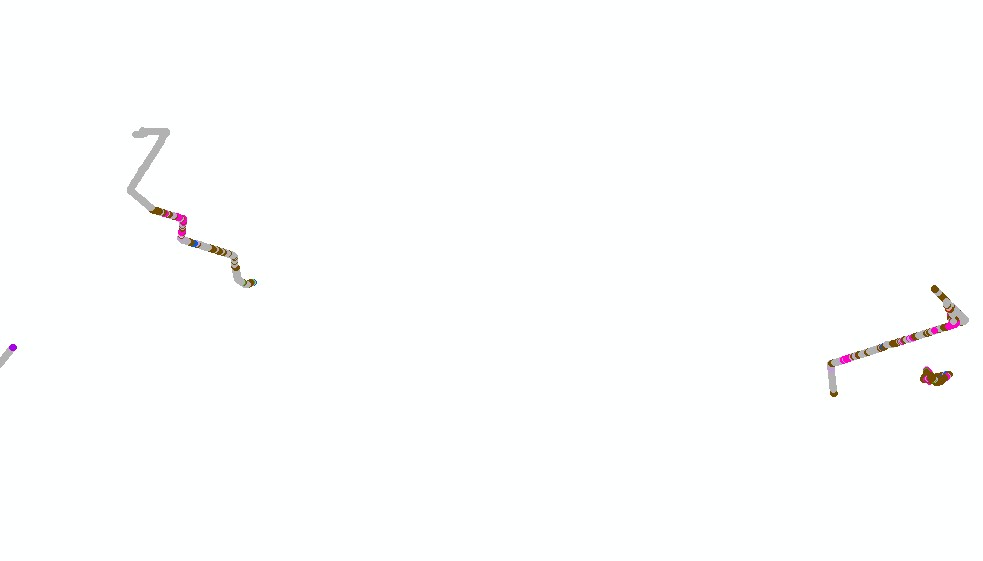
La carte des habitats de coraux d'eau froide du golfe de Gascogne de la campagne BOBECO a été réalisée par le laboratoire Environnement Profond de l'Ifremer dans le cadre du projet CoralFish et d'une convention entre l'Ifremer et l'Agence des Aires Marines Protégées. La méthode employée pour la cartographie des habitats repose sur le dépouillement préalable des vidéos et des images acquises grâce au ROV Victor 6000 dans le cadre de la campagne BOBECO (du 9/09/2011 au 11/10/2011, chefs de mission : Sophie Arnaud-Haond et Anthony Grehan). Les habitats observés ont été définis selon la typologie CoralFish (J.S. Davies, B. Guillaumont, F. Tempera, A. Vertino, L. Beuck, S.H. Ólafsdóttir, C.J. Smith, J.H. Fosså, I.M.J. van den Beld, A. Savini, A. Rengstorf, C. Bayle, J.-F. Bourillet, S. Arnaud-Haond, A. Grehan, A new classification scheme of European cold-water coral habitats: Implications for ecosystem-based management of the deep sea, In Deep Sea Research Part II: Topical Studies in Oceanography, Volume 145, 2017, Pages 102-109, ISSN 0967-0645, https://doi.org/10.1016/j.dsr2.2017.04.014). Les habitats ont ensuite été délimités en fonction des observations faites sur les profils vidéos.
-
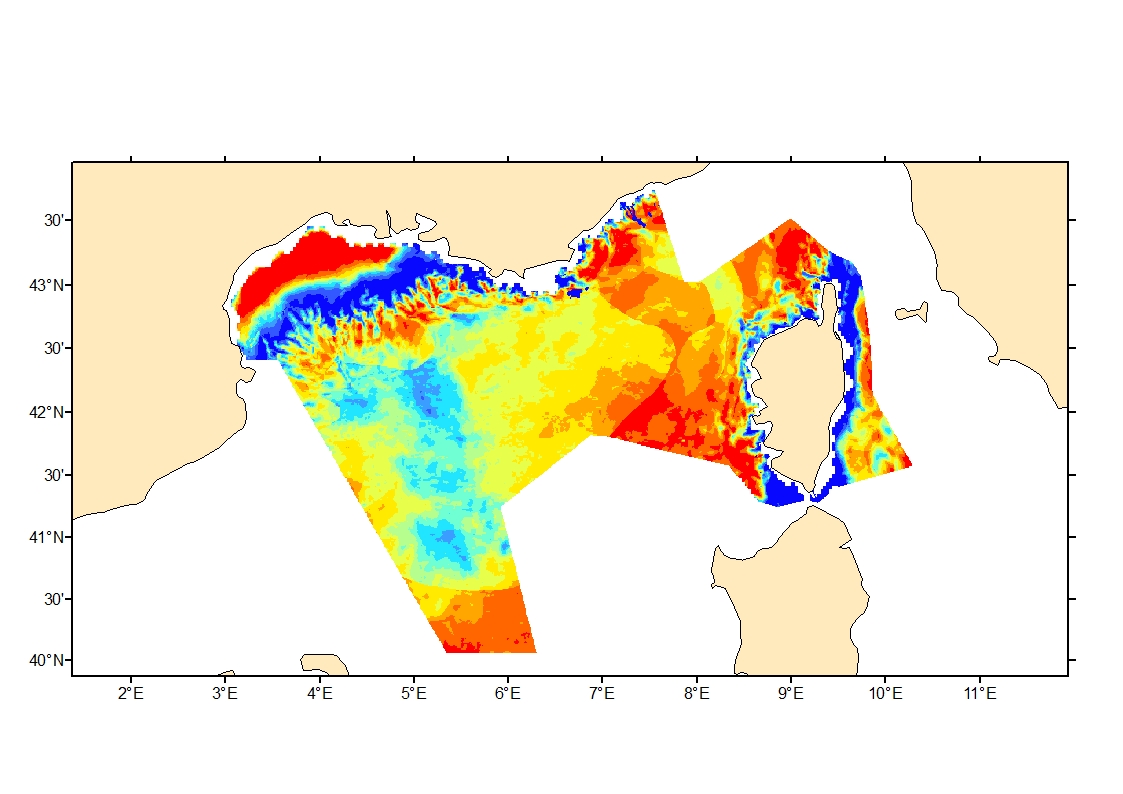
Process-driven seafloor habitat sensitivity (PDS) has been defined from the method developed by Kostylev and Hannah (2007), which takes into account physical disturbances and food availability as structuring factors for benthic communities. It is a conceptual model, relating species’ life history traits to environmental properties. Physical environment maps have been converted into a map of benthic habitat types, each supporting species communities with specific sensitivity to human pressures. It is based on two axes of selected environmental forces. The "Disturbance" (Dist) axis reflects the magnitude of change (destruction) of habitats (i.e. the stability through time of habitats), only due to natural processes influencing the seabed and which are responsible for the selection of life history traits. The "Scope for Growth" (SfG) axis takes into account environmental stresses inducing a physiological cost to organisms and limiting their growth and reproduction potential. This axis estimates the remaining energy available for growth and reproduction of a species (the energy spent on adapting itself to the environment being already taken into account). It can be related to the metabolic theory of the ecology. The process-driven sensitivity (PDS) can be seen as a risk map that combines the two previous axes and reflects the main ecological characteristics of the benthic habitats regarding natural processes. Areas with low disturbance are areas with a naturally low reworking of the sediment, allowing the establishment of a rich sessile epifauna community, with K-strategy species. Areas with low SfG means that the environmental factors, even though there are not limiting, are in lower values, i.e. that it imposes a cost for species to live. In areas combining low disturbance and low SfG, big suspension-feeder species with long life and slow growth can often be found: these species are more vulnerable in case of added disturbance.
-

La carte des habitats de coraux d'eau froide du golfe de Gascogne de la campagne BOBGEO2 a été réalisée par le laboratoire Environnement Profond de l'Ifremer dans le cadre du projet CoralFish et d'une convention entre l'Ifremer et l'Agence des Aires Marines Protégées. La méthode employée pour la cartographie des habitats repose sur le dépouillement préalable des images acquises grâce à la caméra tractée "SCAMPI" dans le cadre de la campagne BOBGEO2 (du 18/07/2010 au 25/07/2010, chef de mission : Jean-François BOURILLET, Ifremer Brest). Les habitats observés ont été définis selon la typologie CoralFish (J.S. Davies, B. Guillaumont, F. Tempera, A. Vertino, L. Beuck, S.H. Ólafsdóttir, C.J. Smith, J.H. Fosså, I.M.J. van den Beld, A. Savini, A. Rengstorf, C. Bayle, J.-F. Bourillet, S. Arnaud-Haond, A. Grehan, A new classification scheme of European cold-water coral habitats: Implications for ecosystem-based management of the deep sea, In Deep Sea Research Part II: Topical Studies in Oceanography, Volume 145, 2017, Pages 102-109, ISSN 0967-0645, https://doi.org/10.1016/j.dsr2.2017.04.014).
-
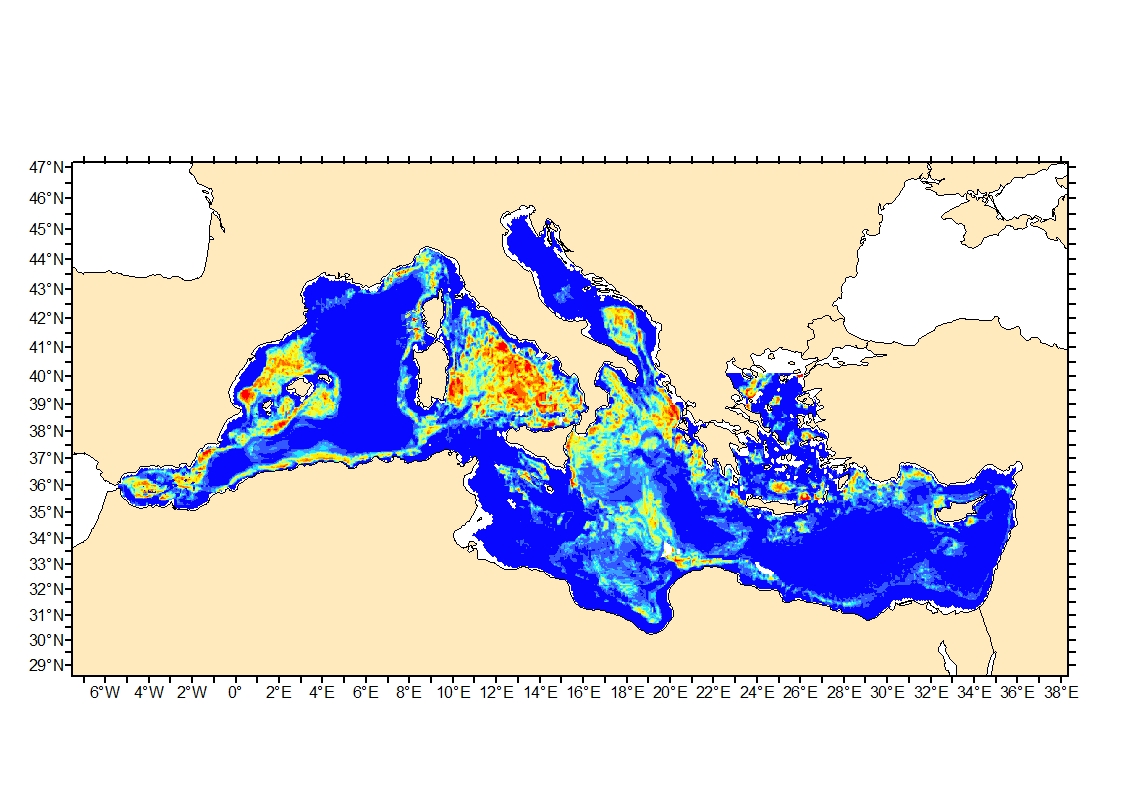
Process-driven seafloor habitat sensitivity (PDS) has been defined from the method developed by Kostylev and Hannah (2007), which takes into account physical disturbances and food availability as structuring factors for benthic communities. It is a conceptual model, relating species’ life history traits to environmental properties. Physical environment maps have been converted into a map of benthic habitat types, each supporting species communities with specific sensitivity to human pressures. It is based on two axes of selected environmental forces. The "Disturbance" (Dist) axis reflects the magnitude of change (destruction) of habitats (i.e. the stability through time of habitats), only due to natural processes influencing the seabed and which are responsible for the selection of life history traits. The "Scope for Growth" (SfG) axis takes into account environmental stresses inducing a physiological cost to organisms and limiting their growth and reproduction potential. This axis estimates the remaining energy available for growth and reproduction of a species (the energy spent on adapting itself to the environment being already taken into account). It can be related to the metabolic theory of the ecology. The process-driven sensitivity (PDS) can be seen as a risk map that combines the two previous axes and reflects the main ecological characteristics of the benthic habitats regarding natural processes. Areas with low disturbance are areas with a naturally low reworking of the sediment, allowing the establishment of a rich sessile epifauna community, with K-strategy species. Areas with low SfG means that the environmental factors, even though there are not limiting, are in lower values, i.e. that it imposes a cost for species to live. In areas combining low disturbance and low SfG, big suspension-feeder species with long life and slow growth can often be found: these species are more vulnerable in case of added disturbance.
-
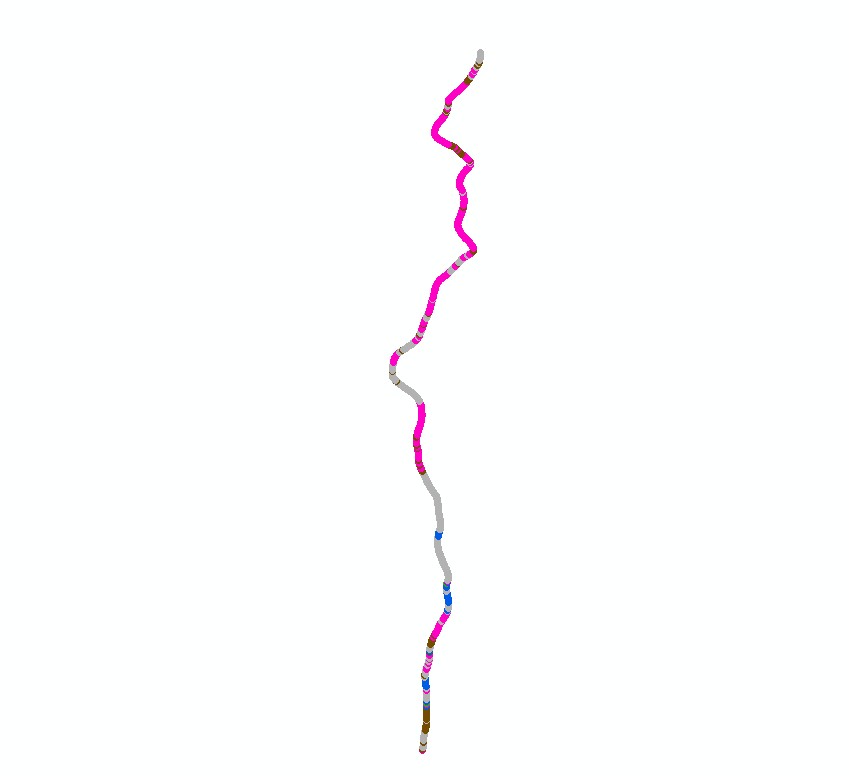
La carte des habitats de coraux d'eau froide du golfe de Gascogne de la campagne EVHOE 2009 a été réalisée par le laboratoire Environnement Profond de l'Ifremer dans le cadre du projet CoralFish et d'une convention entre l'Ifremer et l'Agence des Aires Marines Protégées. La méthode employée pour la cartographie des habitats repose sur le dépouillement préalable des images acquises grâce à la caméra tractée "Scampi" dans le cadre des legs 1 et 2 de la campagne EVHOE 2009 (du 18/10/2009 au 01/12/2009, chefs de mission : Jean-Pierre LEAUTE et Michèle SALAUN). Les habitats observés ont été définis selon la typologie CoralFish (J.S. Davies, B. Guillaumont, F. Tempera, A. Vertino, L. Beuck, S.H. Ólafsdóttir, C.J. Smith, J.H. Fosså, I.M.J. van den Beld, A. Savini, A. Rengstorf, C. Bayle, J.-F. Bourillet, S. Arnaud-Haond, A. Grehan, A new classification scheme of European cold-water coral habitats: Implications for ecosystem-based management of the deep sea, In Deep Sea Research Part II: Topical Studies in Oceanography, Volume 145, 2017, Pages 102-109, ISSN 0967-0645, https://doi.org/10.1016/j.dsr2.2017.04.014).
-
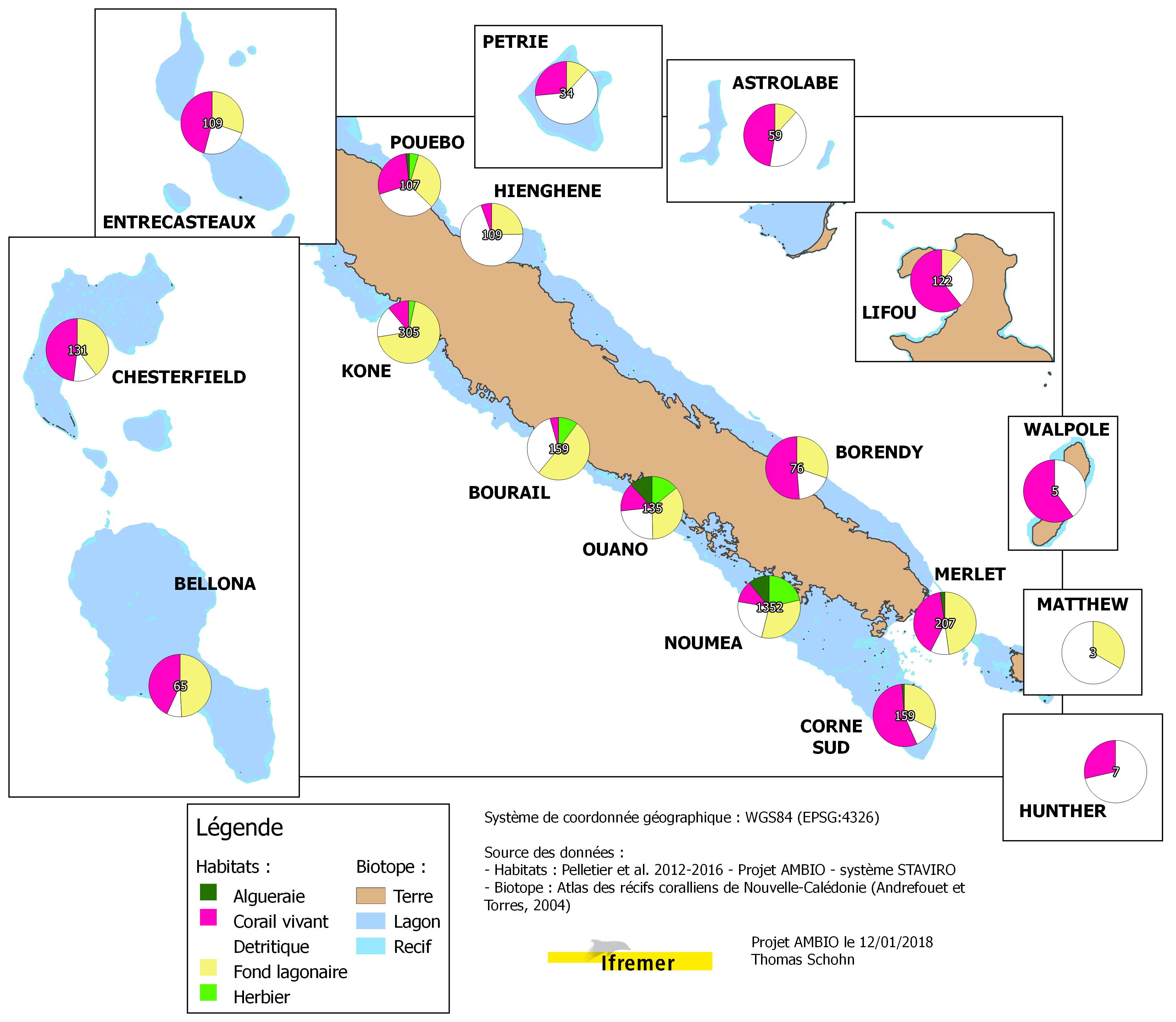
Typologie de l'habitat (donnée de synthèse) obtenue à partir de données issues de l'analyses d'images sous-marines collectées à l'aide du système STAVIRO (Caméra vidéo rotative) au cours du projet AMBIO
 Mon GéoSource
Mon GéoSource